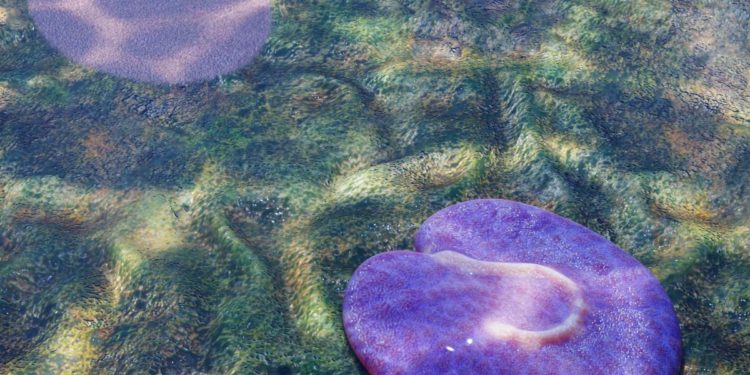Scientists recently unearthed a fossil in South Australia that’s basically, well, a blob. But not just a blob. They say it’s it’s actually one of Earth’s earliest creatures, called Quaestio simpsonorum.
Scott Evans, assistant professor of geology in the Florida State University Department of Earth, Ocean and Atmospheric Science, and a team of paleontologists discovered and identified the early marine animal from around over 550 million years ago, according to FSU News.
The fossil’s appearance is quite fascinating, with its circular, flattened shape and strange question-mark pattern on its surface—and it’s helping scientists better understand how life has evolved on Earth.
As they studied the “blob,” experts realized it was a fossil of one of the first animals capable of moving on its own. The scientists found over a dozen of them, as well as other trace fossils.
“One of the most exciting moments was when we flipped over a rock, brushed it off, and spotted what was obviously a trace fossil behind a Quaestio specimen—a clear sign that the organism was motile; it could move,” said Harvard University evolutionary biologist Ian Hughes.
“The animal is a little smaller than the size of your palm and has a question-mark shape in the middle of its body that distinguishes between the left and right side,” added Scott Evans, assistant professor of geology in the Florida State University Department of Earth, Ocean and Atmospheric Science. “There aren’t other fossils from this time that have shown this type of organization so definitively.”
The left-right asymmetry is an “important sign of evolutionary development,” according to FSU News.
Researchers also compared the Quaestio creature to a small marine Roomba vacuum. You know, the robotic kind that rolls aimlessly around your home, sucking up any fallen crumbs as you eat your takeout and stream your favorite shows? Only, Quaestio would roam the seafloor, consuming nutrients from microscopic algae, bacteria, and other organisms. Pretty sick.
“We’re still finding new things every time we dig,” Hughes said. “Even though these were some of the first animal ecosystems in the world, they were already very diverse. We see an explosion of life really early on in the history of animal evolution.”
The post They Found a 550-Million-Year-Old Fleshy Blob with a Question Mark on It appeared first on VICE.
The post They Found a 550-Million-Year-Old Fleshy Blob with a Question Mark on It appeared first on VICE.


















